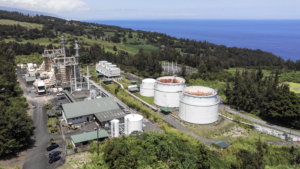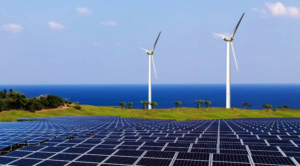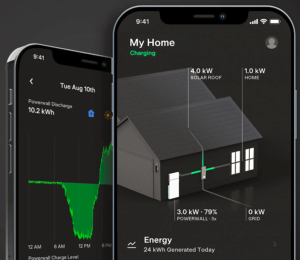Rolling Blackouts – Hawaii’s Energy Future?
Hawaiian Electric advises Big Island customers to cut their power consumption or face rolling blackouts
Last week was a big energy week for the state of Hawaii. First, there was announced shut down of the state’s last operating coal-fired power on Oahu, the state’s largest population center. It was a long time coming and part of the state’s dedicated transition off fossil fuels and onto a 100% renewable energy electricity grid by 2045. A power transition the state’s largest utility Hawaiian Electric continues to struggle with, and in what industry observers saw as a somewhat lackadaisical response to the long anticipated AES plant shut down.
Meantime, on the Big Island, Hawaiian Electric also discovered on Monday, August 29th, they had a problem with their Big Island Hamakua plant when the operators discovered they were out of an essential fuel additive, ammonia. According to a local energy expect familiar with the matter, BeyondKona discovered that ammonia is somewhat in short supply, a supply chain issue further aggravated by the island’s remoteness to its suppliers.
 It is unclear how and why Hamakua Energy Partners allowed their ammonia supplies to just run out, but the consequences were clear enough. Without the needed ammonia additive the plant would run out of fuel within hours and would be forced to shut down its 24×7 power supply to the utility grid – all this happened with extremely short public notice.
It is unclear how and why Hamakua Energy Partners allowed their ammonia supplies to just run out, but the consequences were clear enough. Without the needed ammonia additive the plant would run out of fuel within hours and would be forced to shut down its 24×7 power supply to the utility grid – all this happened with extremely short public notice.
By Friday, September 2nd, (day 5 of the power restrictions) Hawaiian Electric spokesperson Kristen Okinaka went public to announce “With Hamakua Energy back online today, we expect to have sufficient power to continue to serve our Hawaii Island community. We sincerely apologize for the inconvenience and thank everyone for doing their part to conserve electricity and help keep the lights on.”
Big Island customers reported experiencing continuing power disruptions after last week’s “all clear” utility announcement, including a nearly 10 minute blackout on Friday evening, September 3rd, in the north Kona area served by Keahole, the utility’s largest Hawaii Island power plant.
Cause and Consequences
The essential ammonia fuel additive shortage was only discovered once needed for the next fuel batch for the plant boilers. And unlike a traditional power outages which are generally unplanned and come with immediate cause and effects, Hawaiian Electric and Hamakua immediately knew the cause and the effect, and without any immediate remedies were forced to provide utility customers with a minimum same day notice of potential and forthcoming power curtailments until Hamakua was back on line. The Hawaiian Electric warning of possible rolling blackouts was understandable because electricity provided by the Hamakua energy plant represents a 60 MW supply to Hawaii Island’s grid, the second largest grid power capacity source for Hawaiian Electric’s Big Island customers.
The last minute (same day) notice to the public by Hawaiian Electric through media outlets warned customers of possible rolling blackouts that may occur during periods of peak of evening electricity demand, due to Hawaiian Electric’s significantly reduced electricity capacity. Utility customers were further advised to reduce their power consumption during the peak evening period of 5 – 9 pm for at least 5 nights.
Electric utilities are by regulatory-mandate designed to operate and provide a 24×7 electricity supply (without interruption) to their customers. Industry practice in fulfillment of this operating mission includes power production reserves that often exceed normal customer demand and employ stand-by or backup “firm” power which can be deployed on demand when unanticipated production shortages, customer demand, and/or power outages occur.
In this specific case, Hamakua Energy and the utility both failed in service planning preparedness for events both planned and unplanned resulting in the power production shortfall. In short, both were caught flat footed.
Firm Energy, not as reliable as you thought
The Hamakua Energy facility is often referred to as a so-called “firm” power facility, meaning the plant provides power on-demand, and in this case, at a constant power production level around the clock to the Hawaii Island’s utility grid. The Hamakua facility is often referred to as state of the art, but is actually a product of an outdated utility operating model who’s primary purpose in Hawaiian Electric ’s case is an example of extending the operating life of its fossil fueled power plant assets.
Hamakua with its biodiesel “green” credentials is considered in 21st century power generation terms more as lipstick on a pig, and for two primary reasons; first, its life-extending “green” operation primarily serves as a fossil power plant. Second, although biodiesel does produce lower power plant emissions than tradition fossil fuel plants, even 100% pure biodiesel power plants produce and emit toxic NOX, fine particulates into the local air shed, and greenhouse gas emissions into the atmosphere.
The Hamakua plant is designed to burn mostly naphtha as it primary fuel, one of the dirtiest forms of refined oil-based products, and a low cost oil refining by-product better suited to the production of asphalt than being burned as Naphtha to produce electricity. The gooey Naphtha burns very dirty by any measurement, so much so, the EPA forced Hawaiian Electric and its subsidiary Hamakua Energy into air pollution abatement actions in order to achieve compliance with the Clean Air Act. By adding a small percentage of biodiesel and other chemicals into the fuel, the process, called Selective Catalytic Reduction (SCR), is a technical cheat that reduces air pollution and has been applied to stationary source fossil fuel-fired combustion power units for emission control since the early 1970s.
Hamakua Energy choose to add biofuel diesel into the plant’s fuel mix in order to clean up (to a minor degree) its emissions and to just operate within the absolute emissions threshold allowed in the Clean Air Act. Together, with ratepayer dollars, Hawaiian Electric / Hamakua Energy saw this as a win-win opportunity to further promote the project as a clean and green biofuel power plant in the name of renewable power energy while continuing to pollute the island’s local air and affecting area residents.
Recent events at the Hamakua plant demonstrate just how fragile so-called firm energy is though a common dependency on remote supply chains to fulfill ongoing fueling and other operating requirements. Unlike the Sun and wind which do not require remote supply chains to function, Hamakua shares what all combustion-based power plants and technologies have in common;
- First, its pollutes the air and contributes significant amounts of greenhouse gas emissions towards a global climate crisis now in full swing.
- Second, regardless of the type of fuel burned to generate electricity, fuel is the Achilles Heal both in terms of fuel supply operating reliability and smokestack emissions, one of the many environmental and climate by-products. Energy experts and other stakeholders advocating burning our way out off fossil fuels and our climate troubles is a false narrative, and with costs far greater than a gallon of fuel or the price per KWh in which most ratepayers focus their attention.
As a reliable “firm” power source, Hamakua Energy demonstrated that even under the best of conditions, the reliability label associated with firm energy is more a matter of promotion and luck, than reality.
Going Forward with Hawaii’s Zero Polluting Energy Future —
 Climate scientists continue to discover evidence that climate change impacts are happening with greater frequency and scope than originally projected – with compounding effects worldwide. Weather patterns are changing, extreme climate events are increasingly becoming the norm rather the exception, and so the question remains, can we continue as business as usual, and can Hawaii afford to make costly energy decisions based on outdated assumptions?
Climate scientists continue to discover evidence that climate change impacts are happening with greater frequency and scope than originally projected – with compounding effects worldwide. Weather patterns are changing, extreme climate events are increasingly becoming the norm rather the exception, and so the question remains, can we continue as business as usual, and can Hawaii afford to make costly energy decisions based on outdated assumptions?
Hawaii Island and the state operating within Hawaiian Electric’s grid can do better on the path 100% renewable electricity production. A night and day contrast can be found with Kauai’s KIUC electric utility cooperative. KIUC is state’s best example of how to address climate change with respect to the land and people, and to do it cost effectively. For KIUC, the Sun and wind mostly power of the island’s stand-alone grid. PV solar panels produce power on cloudy days, the wind blows with some reliability, and batteries serve to ensure this zero emissions clean energy utility has power on demand for its customers, and when they need it.
Another benefit of solar and wind energy is that they are considered to be decentralized forms of electricity generation. Decentralized electricity systems and microgrids are less prone to power failures, and are much greater in their resiliency to storm induced power shortages. If part of a decentralized power system fails, the effect is generally isolated, with only minor effects on the larger grid system as a whole – an energy lesson painfully learned by the residents and businesses of Puerto Rico when their fossil fueled and centralized power system failed the population. In 2017, Hurricane Maria hit Puerto Rico, knocking out electricity across the entire island and further exposing the vulnerability of the already fragile power grid. Some residents were left without electricity for more than a year.
With battery and hydro storage options coupled to wind and solar energy sources, the 20th century energy argument that solar and wind are internment and unreliable power sources is an outdated argument which no longer applies in today’s energy technology reality.
Hawaii’s electric utilities are required in a statewide effort to tackle climate change to increase their use of renewable energy sources to generate electricity. The State has set a goal of 100% renewable electricity generation by 2045. The target for 2030 is at least 50% of electricity generation from renewable energy sources, KIUC Kauai has already reach 70% their renewable energy threshold, while Hawaiian Electric continues to struggle in its transition off fossil fuels and old utility operating assumptions.
During this past legislative session the State set another energy goal for 2045, to be net-negative as to greenhouse gas emissions and to be carbon neutral. It is clear today, a great proportion of the energy produced in Hawaii need not be from polluting and climate change contributing combustion-based energy sources, when clean, zero emissions energy alternatives coupled to energy storage options are not only available, but can provide uninterrupted electrical energy for long periods as power on-demand energy sources and when only limitation is not the technology, but choosing to scale solar-wind-storage energy installation to demand. In the meantime, battery technology continues to improve in efficiency and performance, and prices continue to drop further advancing solar to Hawaii’s number one price performance energy option.
Today’s energy reality on Hawaii Island is mostly controlled by Hawaiian Electric, and primarily fueled by a legacy of diesel-powered plants. While the Hamakua Energy facility burns mostly naphtha, one of several “dirty” energy oil-based energy options, Puna Geothermal Ventures (PGV), another Big Island power plant promoted by Hawaiian Electric as a renewable “firm energy” replacement for fossil fuels, but has proven to be lesson in how not to do geothermal with the generating facility located on the one of world’s most active volcanos sites, a painful lesson demonstrated during the 2018 volcanic eruption of Kilauea when lava flows forced the long term shut down of PGV power plant operation.
Let the Sun shine in..
Hawaiian Electric has one forever renewable energy option largely overlooked. An option that is supported by the wide scale deployment of proven and distributed rooftop solar; increasingly coupled to localized battery power management and backup.
 Image a zero (polluting) emissions power source at the point of power consumption, and optionally connected to the local grid. In this alternate universe, consumer power needs are all or mostly fulfilled by solar energy produced, stored, and consumed onsite for both residential and business power consumers. Electricity costs are substantially reduced, power reliability is greatly improved, and past industry objectives to rooftop solar without storage, noted for creating power load balancing issues for some grid operators — is an 5 year old argument which no longer applies.
Image a zero (polluting) emissions power source at the point of power consumption, and optionally connected to the local grid. In this alternate universe, consumer power needs are all or mostly fulfilled by solar energy produced, stored, and consumed onsite for both residential and business power consumers. Electricity costs are substantially reduced, power reliability is greatly improved, and past industry objectives to rooftop solar without storage, noted for creating power load balancing issues for some grid operators — is an 5 year old argument which no longer applies.
The energy technology is clean, forever renewable, proven, and represents the most efficient and cost effective means to close Hawaii’s clean and renewable energy power gap. This is today’s consumer power reality. Distributed roof top solar and storage is also faster to deploy, and certainly lower in ratepayer costs underwriting utility scale renewable projects, power grid and other utility centric upgrades needed for the state’s largest electric utility to shed a long history of centralized fossil fuel power production, and potentially replaced with distributed power generation in partnership and co-management between power consumers and electricity-provisioning utilities.
Rooftop solar today represents only 17% Hawaiian Electric’s renewable energy contribution to the state’s RPS goal and in the state’s largest utility’s transition off fossil fuels. The statewide advancement of rooftop solar and storage is Hawaii’s clean and equitable energy future — and that energy future has arrived.
Any energy transition decisions we make today will define Hawaii for the foreseeable future, not just in terms of livability and sustainability, but how well we survive the planetary climate changes we have inflicted since the beginnings of the Industrial Revolution.




Leave a Reply
Join the Community discussion now - your email address will not be published, remains secure and confidential. Mahalo.